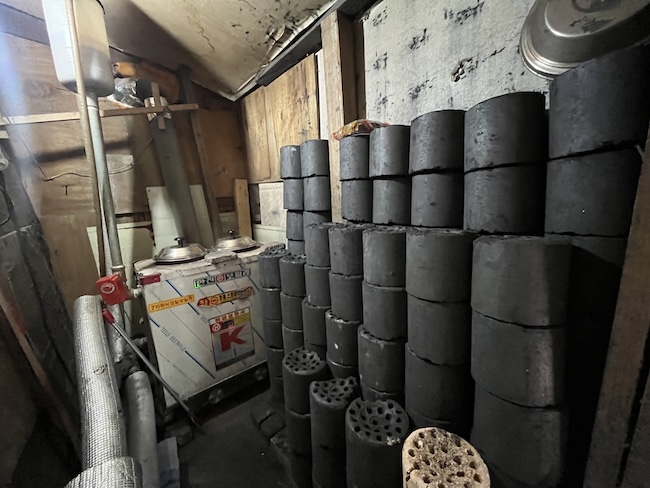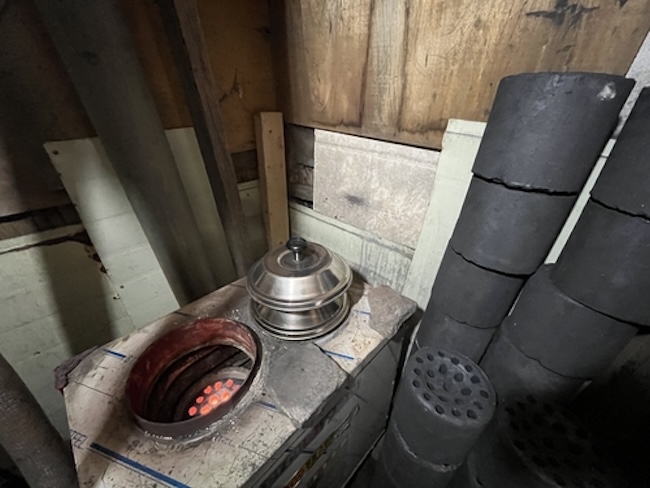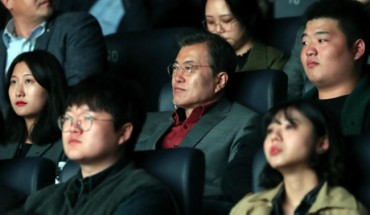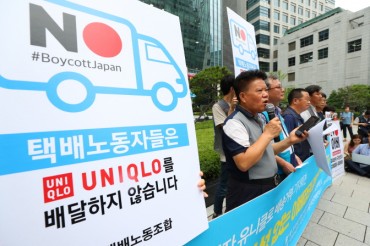
For the 66 households in Jeonwon Village, these briquettes, provided annually by social welfare organization the Babsang Coal Briquette Bank, are a lifeline. (Image courtesy of Yonhap)
SEOUL, Aug. 5 (Korea Bizwire) – On July 30, in the Jeonwon Village of Seoul’s affluent Seocho district, piles of coal briquettes lined the alleyways, seemingly at odds with the sweltering heat that pushed the heat index above 33 degrees Celsius.
In this community of makeshift homes and vinyl greenhouses, coal briquettes are not just for winter warmth — they’re a vital defense against summer’s humidity.
The damp conditions cause floor mats and wallpaper to wrinkle and attract insects, making these fossil fuel remnants an unlikely but essential part of summer life.
“Without burning briquettes when it rains, all sorts of bugs crawl in, and the smell becomes unbearable,” said 90-year-old resident Eom Bok-nam. Choi Byung-hak, 88, added, “Without the briquettes, rooms become damp and insects proliferate.”
For the 66 households in Jeonwon Village, these briquettes, provided annually by social welfare organization the Babsang Coal Briquette Bank, are a lifeline. Most residents subsist on basic pensions of about 300,000 won per month, barely enough for essentials.

coal briquettes are not just for winter warmth — they’re a vital defense against summer’s humidity. (Image courtesy of Yonhap)
The Briquette Bank typically distributes coal from September to March, but Jeonwon Village often exhausts its supply by May, necessitating additional support. This year, each household received an extra 200 briquettes in May.
Climate change has exacerbated the situation. “This year’s heavier rains and longer monsoon season meant we used briquettes more frequently,” Choi explained. “We’re using two to three times more than before.”
The need for briquettes extends beyond humidity control. Many elderly residents, like Eom, who underwent hip surgery a few years ago, rely on the warmth for pain relief. “I can’t sleep without a warm floor,” she said, noting that she uses eight briquettes daily in winter and four in summer.
Despite this year-round need, briquette donations plummet after April. Last year, the Babsang Coal Briquette Bank received only 10,200 briquettes in June, compared to 1.69 million in December. The summer months (June to August) accounted for merely 11% of the average monthly donation.
Lee Soon-ja, 78, head of the village’s residents’ committee, emphasized the dire need for summer support. “We’re supposed to stretch winter donations through summer, but we always run short by late April or early May,” she said. “Summer briquette support is crucial.”
M. H. Lee (mhlee@koreabizwire.com)






